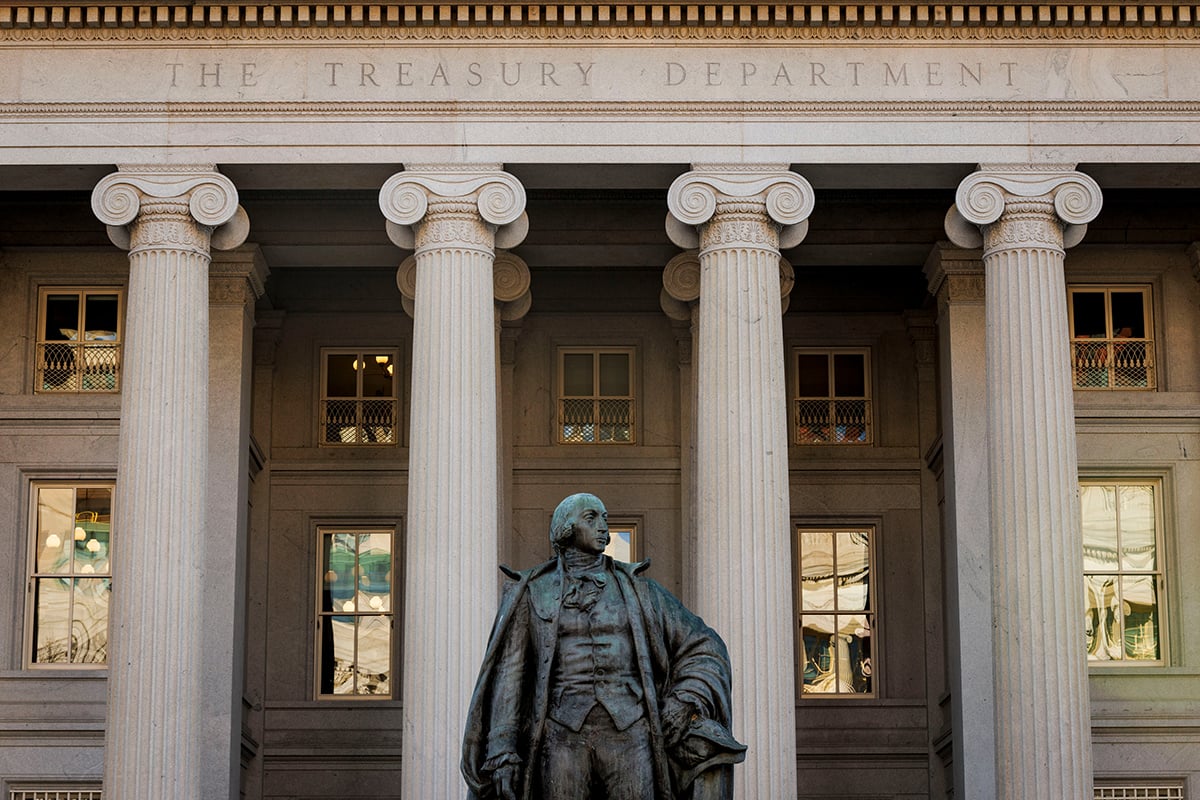Federal Reserve officials are probably engineering a third round of large-scale asset purchases, while they are unlikely to announce a decision today, according to economists in a Bloomberg News survey.
Sixty-nine percent of those surveyed say Chairman Ben S. Bernanke will embark on a third round of quantitative easing, or QE3, with a plurality of 36 percent predicting the move in the first quarter of next year, according to the poll of 42 economists from Oct. 26-31.
“We are becoming increasingly persuaded that QE3 is coming, this time focused on purchases of mortgage-backed securities,” said Dana Saporta, U.S. economist at Credit Suisse in New York. “The best guess is at this meeting they'll try to build some consensus around the idea and lay the groundwork for eventual purchases.”
Fed officials are weighing further easing even after economic growth last quarter accelerated to the fastest pace in a year. Vice Chairman Janet Yellen and Chicago Fed President Charles Evans said in speeches last month that more action may be needed to reduce an unemployment rate stuck around 9 percent or higher for 30 months. Governor Daniel Tarullo said the Fed should consider buying housing debt to lower mortgage rates and spur growth.
Three regional bank presidents have dissented against two easing steps since August, posing the strongest opposition among policy makers since 1992. Bernanke hasn't publicly said whether he believes a third-round of asset purchases is necessary. In a speech last month in Boston, he said the Federal Open Market Committee is exploring ways to better communicate its goals, including through its forecasts and policy statement.
The FOMC plans to release a policy statement at 12:30 p.m. in Washington after a two-day meeting. The FOMC forecasts will be released at 2 p.m., and Bernanke is scheduled to hold a press conference beginning at 2:15 p.m.
Sixty-three percent of economists say Fed officials will first alter their communication strategy by clarifying how they align policy with inflation and unemployment rates. Some 42 percent believe the Fed will announce its intentions to hold interest rates near zero until certain levels of inflation and unemployment are reached, an idea proposed by Evans.
The central bank should ease until unemployment reaches 7.5 percent, so long as inflation in the medium-term doesn't breach 3 percent, Evans said.
Twenty-one percent of economists say the Fed, in changing its approach to communications, will first set explicit long-run targets for inflation and unemployment, though not necessarily as a condition for zero interest rates. Twenty-four percent say the Fed will start out by announcing an explicit target for inflation only.
“A new communication device would help people understand when and how policy would return back to normal, and it would help explain how policy might have to be even more accommodative in the short term,” said Michael Dueker, chief economist for Russell Investments North America in Seattle.
The FOMC said after its September meeting that it saw “significant downside risks” to the U.S. economy from strains in global financial markets. The economy strengthened in the third quarter of 2011, growing at an annual rate of 2.5 percent, compared with 0.4 percent in the first quarter and 1.3 percent in the second.
Companies added 110,000 jobs in October, Roseland, New Jersey-based ADP Employer Services said today. The median forecast of economists surveyed by Bloomberg called for an advance of 100,000.
Treasuries extended losses and stock futures held gains after the report. The yield on the 10-year Treasury note rose five basis points, or 0.05 percentage point, to 2.04 percent at 8:32 a.m. in New York. Futures on the Standard & Poor's 500 Index expiring in December rose 0.5 percent to 1,230.50.
A Labor Department report on Nov. 4 may show that nonfarm payrolls increased by 95,000 jobs last month, down from a gain of 103,000 in September, according to another Bloomberg survey. The unemployment rate probably stayed at 9.1 percent.
The S&P 500 has dropped 5.2 percent in the past two trading days on concern that a Greece referendum pledged by Prime Minister George Papandreou may threaten Europe's bailout.
The European fiscal crisis claimed one U.S. firm, MF Global Holdings Ltd., the holding company for the broker-dealer run by former Goldman Sachs Group Inc. co-chairman Jon Corzine. The company filed for bankruptcy Oct. 31 after making bets on European sovereign debt.
“If there's a blow-up in Europe, that would be the impetus the Fed needs to move,” said Ellen Zentner, senior U.S. economist at Nomura Securities in New York, in a phone interview. Action would probably be targeted to the housing market, she said.
“The Fed has known that housing is the root of all evil for the economy, and we're finally getting acknowledgment of that” she said, with the Obama administration's announcement last month it would expand the Home Affordable Refinance Program. The so-called HARP aims at helping homeowners with Fannie Mae or Freddie Mac mortgages and little or no equity in their properties.
The FOMC's previous two statements drew opposition from Charles Plosser, president of the Philadelphia Fed, along with Narayana Kocherlakota of Minneapolis and Richard Fisher of Dallas. The regional Fed chiefs objected to the central bank's pledge in August to hold its target rate near zero through at least mid-2013, and to its September commitment to replace $400 billion of short-term Treasuries with the same amount of longer- term bonds in a bid to push down borrowing costs.
Asked if monetary policy was appropriate given the outlook for the economy, 48 percent of economists said it was too easy, compared with 26 percent who said it was too tight. Another 26 percent said it was “just right.”
Still, the Fed should signal the need for more stimulus by adopting a target for nominal gross domestic product, former White House economist Christina Romer said in a New York Times editorial published on Oct. 30. Romer is also a contributing editor at Bloomberg. Goldman Sachs Group Inc. chief economist Jan Hatzius also supported such a move in an Oct. 15 note to clients.
Bloomberg
Complete your profile to continue reading and get FREE access to Treasury & Risk, part of your ALM digital membership.
Your access to unlimited Treasury & Risk content isn’t changing.
Once you are an ALM digital member, you’ll receive:
- Thought leadership on regulatory changes, economic trends, corporate success stories, and tactical solutions for treasurers, CFOs, risk managers, controllers, and other finance professionals
- Informative weekly newsletter featuring news, analysis, real-world case studies, and other critical content
- Educational webcasts, white papers, and ebooks from industry thought leaders
- Critical coverage of the employee benefits and financial advisory markets on our other ALM sites, PropertyCasualty360 and ThinkAdvisor
Already have an account? Sign In Now
*May exclude premium content© 2025 ALM Global, LLC, All Rights Reserved. Request academic re-use from www.copyright.com. All other uses, submit a request to [email protected]. For more information visit Asset & Logo Licensing.





